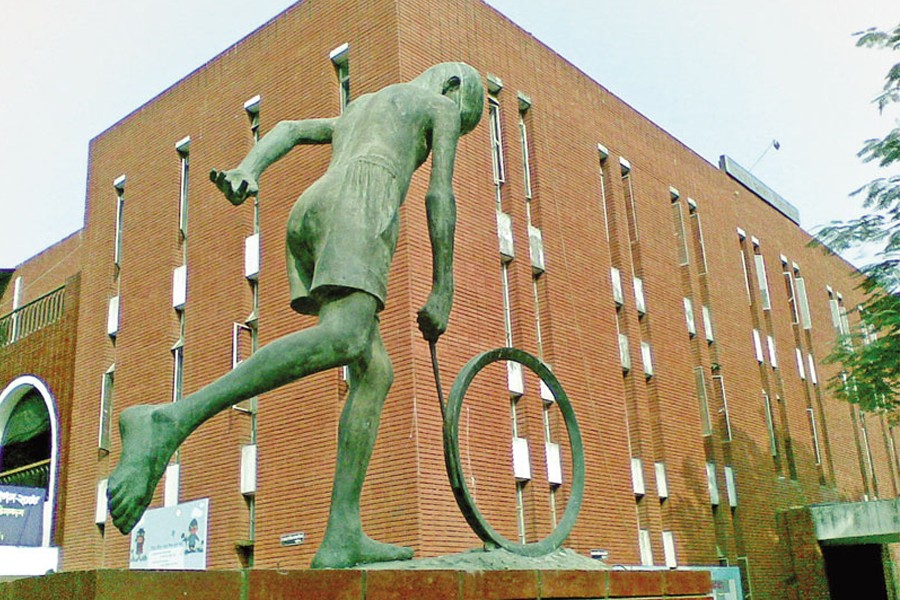
A CLOSE LOOK
Consolidation of cultural mooring is sorely missed
Nilratan Halder | Saturday, 10 August 2024

All great revolutions in human history have sought to redefine the nature of political power and transform society in favour of the governed, so has this latest student movement in Bangladesh. The uniqueness of this movement is that the original contentious issue was a modest non-political peaceful demonstration ---one that spread like a conflagration only to witness a most unexpected and wondrous culmination.
True all great mass uprising has in its bosom power of seismic magnitude that remains dormant before the volcanic eruption takes place shaking the Earth. The French Revolution did it between 1787 and 1799 and the Russian Revolution in 1977 also did it. Both revolutions did not only transform French and Russian political systems beyond recognition but also help change human society and mental makeup of political scientists all across the planet. The ideas that propelled the change were radical at those times. In Bangladesh there is no such radical political theory that has governed the motive of students who have spearheaded the movement.
Theirs is a simple demand for doing away with discrimination in society. Sounds simple but not easy to translate it into reality! There is no question about the dedication and commitment students have so far demonstrated. But can the older generation that failed to live up to the spirit of the liberation war of 1971 and brought about a demise of that spirit and the dream of establishing a society where all people were treated equal and given to enjoy equitable share of wealth be equal to the task?
Students did not have much time to organise things on all fronts. Such a social revolution takes years to prepare the people. It triumphed so suddenly. Here the elders completely failed to contain the spillover effects. The generational aberration has sullied the victory of students. One thing is crystal clear that not only the politicians of the past regime failed to esteem the inner urge of the youth but also intellectuals and socials scientists here have misread the young minds and dismissed them as generation unconcerned about serious issues but honed in on smart gadgets.
It is also clear that not all the protesters are motivated to advance the agenda the student leaders or coordinators have made their target. There were and still are elements with motives contrary to the one being pursued. The generations that were in their prime of youth in the 50s, 60s and 70s were in far greater throes before gaining independence and yet that priceless treasure they could not make sacrosanct by living up to the dream of the founding fathers and the martyrs. Coups, counter-coups, autocracy and partisan elected but pseudo-autocratic dispensations have marred the nation's journey towards the cherished goal.
Why? One of the fundamental reasons is the lack of consolidation of cultural mooring for the nation. When children at a young age are taught that music and songs, sculptures and painting are all anti-religious, a section of people believe in such exhortations. That painting, statue and sculpture are artwork not images of gods and goddesses is missed by this section of people. If mental backwardness is responsible for political vendetta against the rivals, the communal mindset is at work in carrying out attacks on the minorities and their place of worships.
Distorted orientation is dangerous and this has come to wreck havoc on some of the institutes and organisations immediately after the fall of the Awami League government. The nation's political and cultural legacies have been widely desecrated. Nations build on their past but here the main architect of the country's liberation has been subjected to the ultimate desecration. Who can vandalise Swadhinata Sangram Vaskarjo (Liberation war sculpture). Certainly not the followers of the students who have led the mass movement!
The elements who torched and destroyed the Sangeetangan and the musical instruments in the museum of Ustad Allauddin Khan in Brahmanbaria, a maestro of Indian classical music, in 2016 are quite active to accomplish their agenda contrary to that of the students dreaming of building a new Bangladesh. They have not only vandalised the sculpture on Fuller Road but also the bust of Rabindranath right on the day of the great poet's anniversary of death as well as the one of Shilpacharya Zainul Abedin in Mymensingh. The statue of 'Duranto' at Shishu Academy was also not spared.
Add to these the targeted attacks on the studio of the Gaan Bangla TV channel and similar torching of Rahul Ananda's home, there emerges a pattern of assault. Indeed, there is a method in madness. Without addressing such aberrations, the dream of rebuilding a Bangladesh free of discriminations will vanish in the thin air.